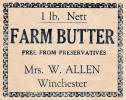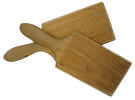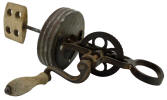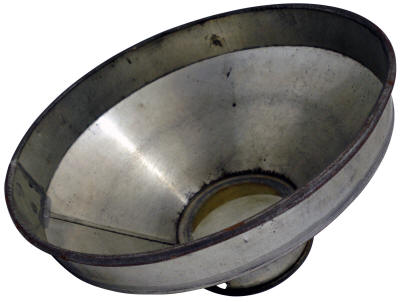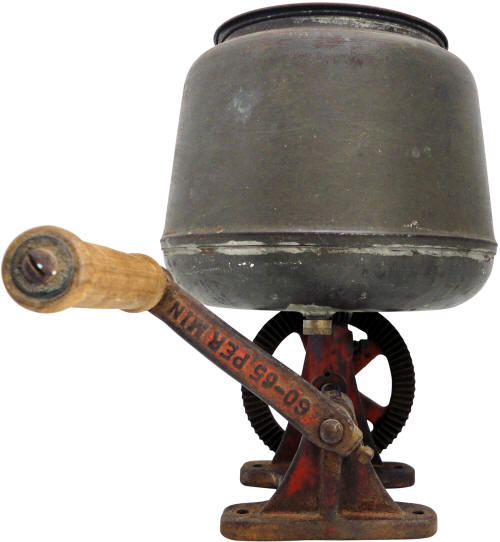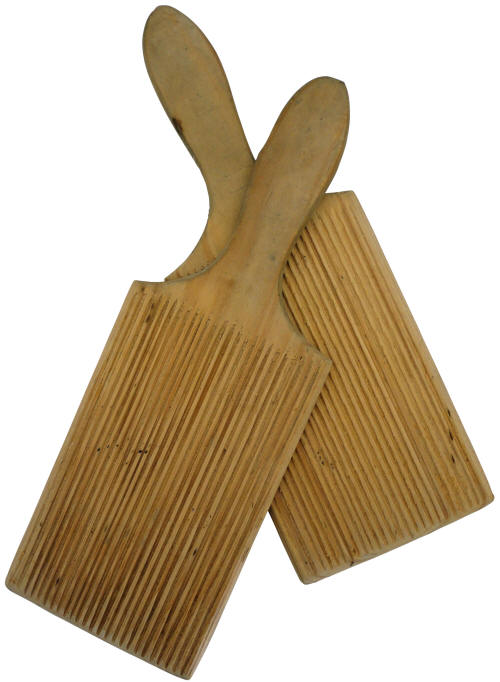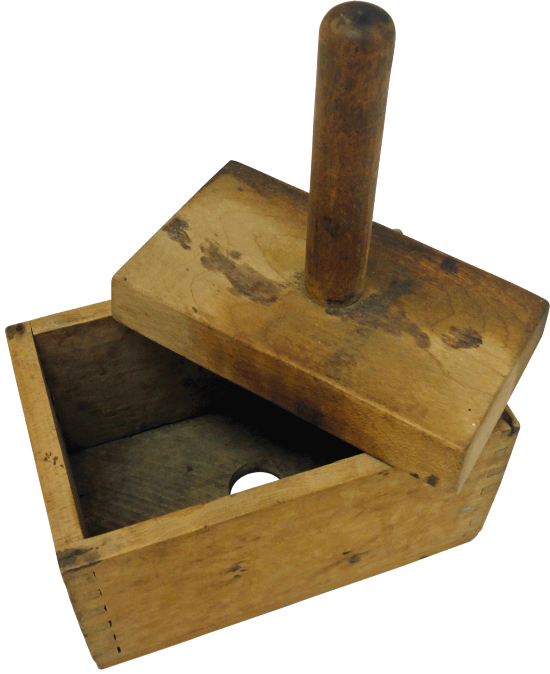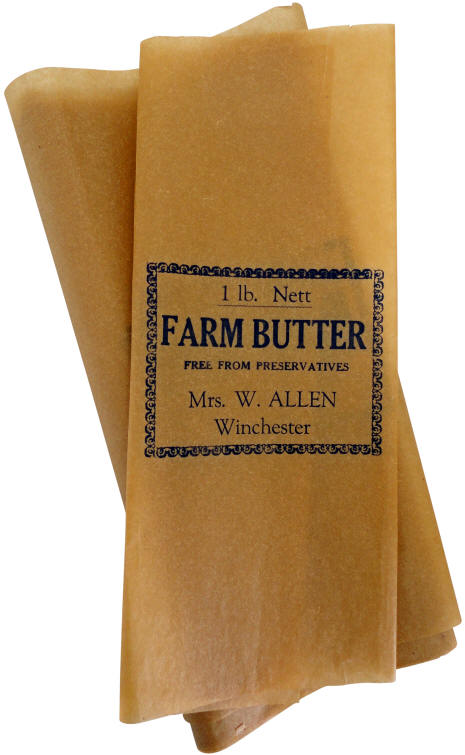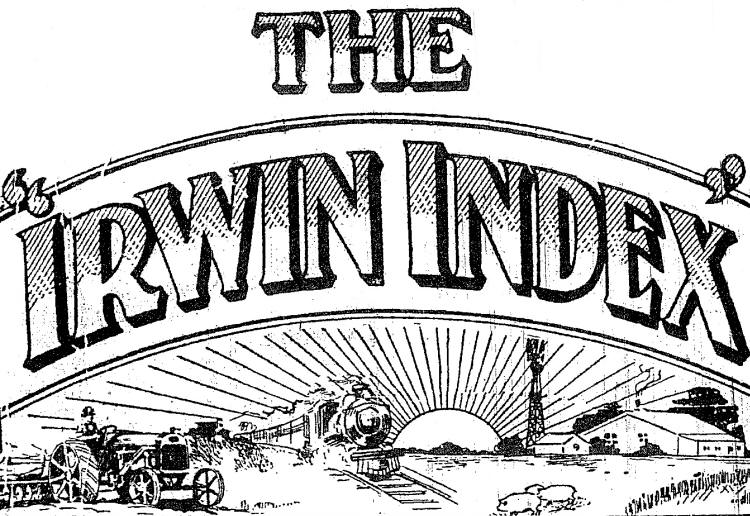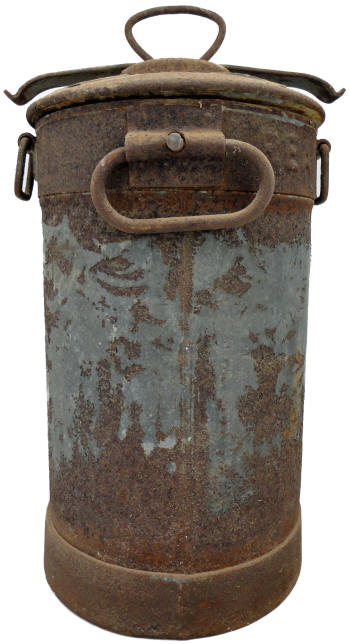Milk, Cream & Butter
Most farms and some townspeople in
Coorow, Carnamah and Three Springs once kept a cow to provide their household with milk and its
by-products of cream and butter. Making butter was a manual and time consuming task. It involved
multiple pieces of equipment used to separate the cream from milk and then churn it into
butter. It was a domestic chore often carried out by the lady of the
house, or by children. This was commonplace in many districts around
Australia and elsewhere in the world.
Below: Miss Daisy Bowman milking a cow on Home Farm in Carnamah and another two cows feeding
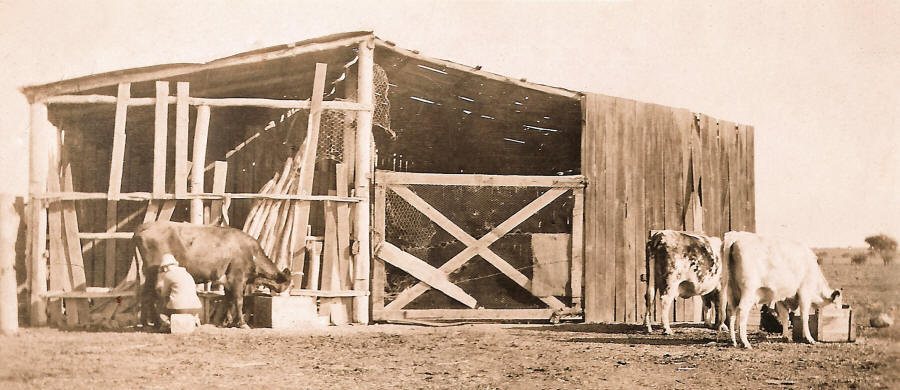
Below: Miss Daisy Bowman milking a cow on Home Farm in Carnamah and another two cows feeding

Right: Milk Strainer
Fresh milk was poured through a milk strainer to remove any hair or dust that may have fallen in during milking. Milk strainers, like the one shown to the right, were often made to screw onto large metal cans.
Fresh milk was poured through a milk strainer to remove any hair or dust that may have fallen in during milking. Milk strainers, like the one shown to the right, were often made to screw onto large metal cans.
Left: Milk Separator
Milk separators were used to separate the milk into cream and skimmed milk. Fresh milk was poured into the large bowl at the top and the handle manually turned. This once new technology was called centrifugal separation.
The milk would go down from the bowl and into a spinning mechanism that would result in the heavier milk particles being pulled outwards while the lighter cream particles would gather in the middle. The cream and skimmed milk would then come out of separate spouts.
The ratio of skimmed milk to cream would depend on the speed the handle was turned, the cow the milk had come from, the weather and what the cow had been eating!
Milk separators were used to separate the milk into cream and skimmed milk. Fresh milk was poured into the large bowl at the top and the handle manually turned. This once new technology was called centrifugal separation.
The milk would go down from the bowl and into a spinning mechanism that would result in the heavier milk particles being pulled outwards while the lighter cream particles would gather in the middle. The cream and skimmed milk would then come out of separate spouts.
The ratio of skimmed milk to cream would depend on the speed the handle was turned, the cow the milk had come from, the weather and what the cow had been eating!
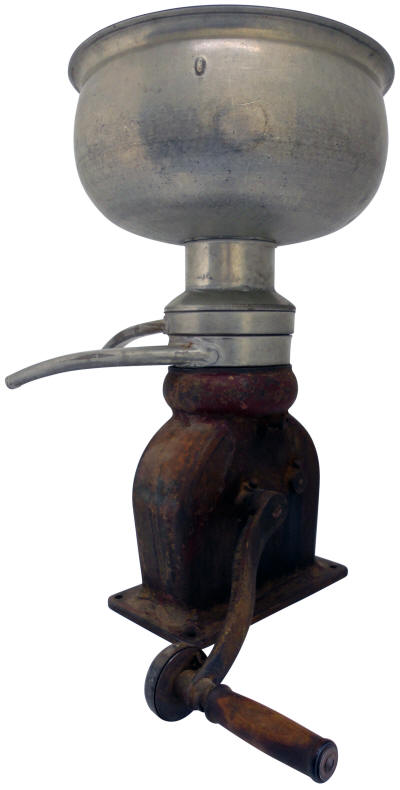
Right: Butter Churn
Following separation butter churns were used to churn the cream into butter. Cream was added to the churns and turning the handle would move a paddle inside. Water and salt was added at certain intervals.
Following separation butter churns were used to churn the cream into butter. Cream was added to the churns and turning the handle would move a paddle inside. Water and salt was added at certain intervals.
"We used to turn the bloody handle for hours"
-- Vida Whitehurst née Wells speaking about
herself and her sister churning butter as children in Carnamah in
the 1930s
Right: Butter Pats
Butter pats were used to remove the butter from the churn and press it into a solid rectangular shape. In some instances, especially if it was for sale, the pats would instead be used to push the butter into moulds.
Butter pats were used to remove the butter from the churn and press it into a solid rectangular shape. In some instances, especially if it was for sale, the pats would instead be used to push the butter into moulds.
Right: Butter Mould
Butter was put into the box of the mould and the lid then pushed down to compact it into a solid rectangular shape. The hole in the bottom was used to help get the butter out.
Butter was put into the box of the mould and the lid then pushed down to compact it into a solid rectangular shape. The hole in the bottom was used to help get the butter out.
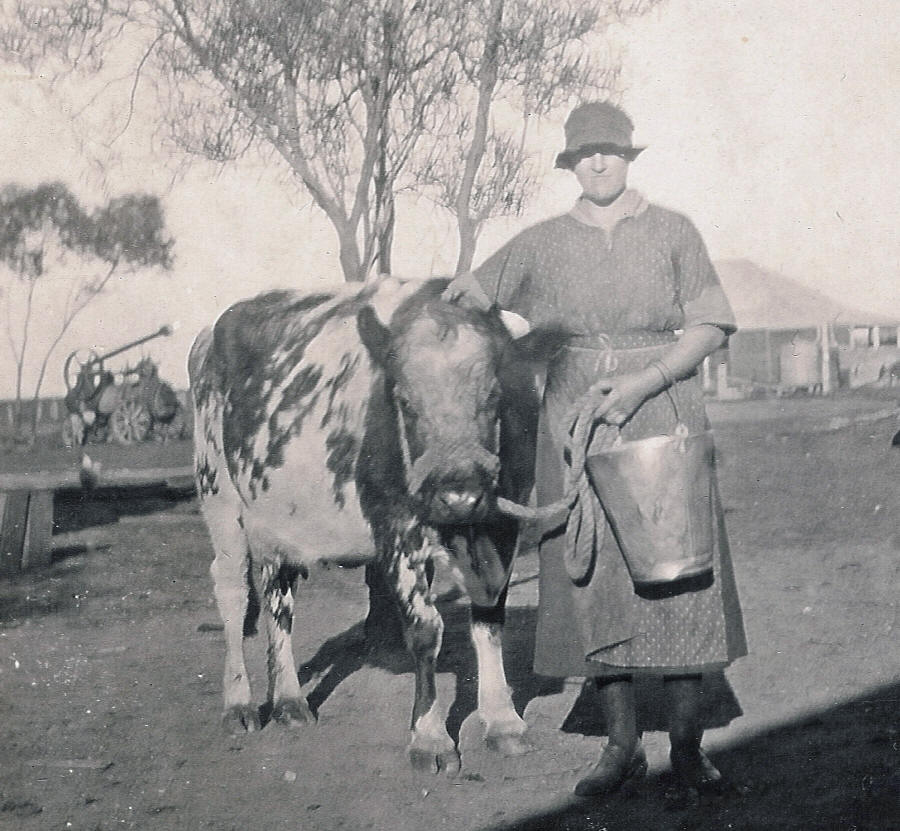
Left: Butter Wrappers
Sometimes more butter than what the home required was made with the excess being sold to increase the household income. The printing office of the local newspaper in Carnamah manufactured specialised butter wrappers for this purpose.
These wrappers were printed in Carnamah at The North Midland Times newspaper office for Mrs Gert Allen of Mi Blu Aven Farm in Winchester.
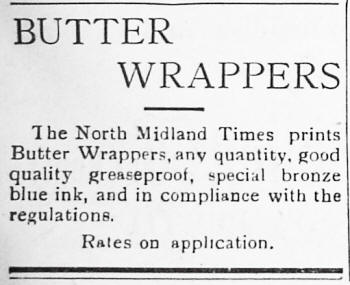
Sometimes more butter than what the home required was made with the excess being sold to increase the household income. The printing office of the local newspaper in Carnamah manufactured specialised butter wrappers for this purpose.
These wrappers were printed in Carnamah at The North Midland Times newspaper office for Mrs Gert Allen of Mi Blu Aven Farm in Winchester.


Above: NAUGHTY cows eating a local wheat crop! These are the same three cows from the first photo.
In the early years numerous townspeople kept cows in Carnamah. Some had them on vacant blocks in town and others kept them in farmers’ paddocks. Among the exceptions was a cow named Bonny who wandered freely around town. She belonged to the local baker Leslie Trotter, and when she died her death made it into the columns of the regional newspaper The Irwin Index - see below!
"Bonny," Carnamah's well known cow, the property of Mr A. L.
Trotter, died of inflammation on Monday evening last. Bonny's placid
gait and amicable aspect made her a familiar figure to the people of
Carnamah as she wandered peacefully around the town. So well-known
did Bonny become that she almost became an institution, and when she
died the people of Carnamah discussed her going with almost as much
regret as a human.
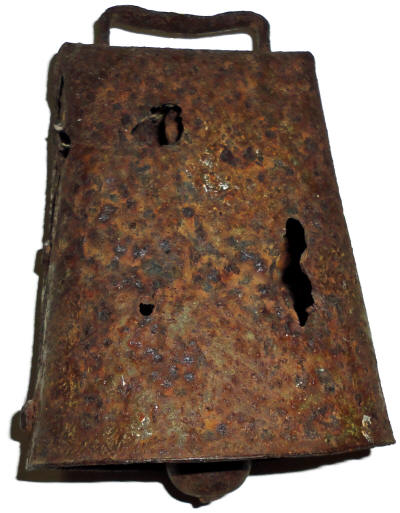
Upper Right: 1932 Advertisement for Mrs Sharp's Dairy
The husband of Mrs Agnes Sharp died in 1925 leaving her with two infant children. She took over the running of their Yarrow Farm in Carnamah in addition to establishing and operating a dairy. For many years she delivered milk to customers in the Carnamah townsite each day. Mrs Sharp ran her dairy until 1946.
Right: 1936 Advertisement for Kroschel's Dairy
Charlie Kroschel ran a tearooms at 10 Macpherson Street in Carnamah - a building which is now the Carnamah Museum. After leasing out his tearooms in mid 1935 he ran a small dairy for six months. His dairy was located just west of town.
Below: Baxter J. Bothe milking in Coorow in the 1950s
Left: Cow Bell
The noise form the bell, hung around the neck, made it easier to find the cow. This assisted when it was time for milking and also if the cow had been let into unfenced bush to graze freely.
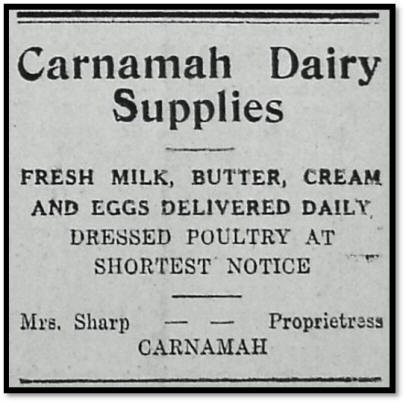
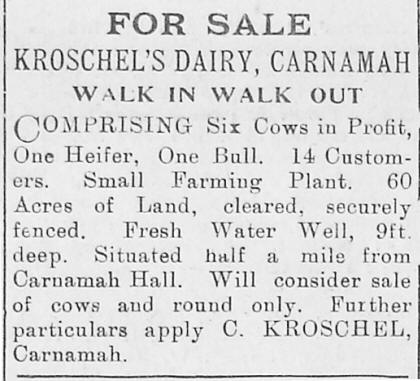
The noise form the bell, hung around the neck, made it easier to find the cow. This assisted when it was time for milking and also if the cow had been let into unfenced bush to graze freely.

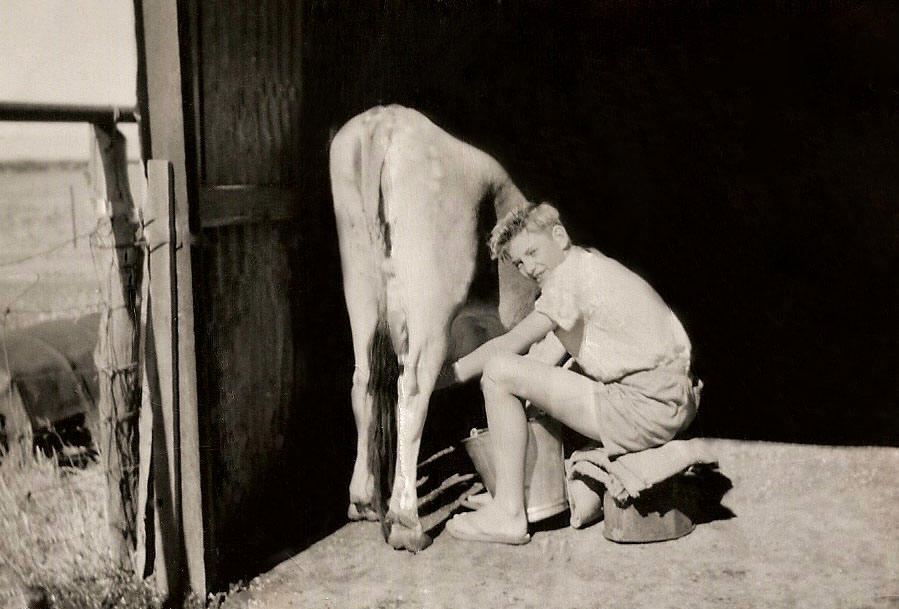
Right: Cream Can
This cream can was used by Mrs Kate McIntosh of Carnamah to send cream to Perth, which supplemented her income. The latches on each side rise over the thin part at the top to keep the lid firmly in place.
This cream can was used by Mrs Kate McIntosh of Carnamah to send cream to Perth, which supplemented her income. The latches on each side rise over the thin part at the top to keep the lid firmly in place.
"May milks two cows, so we have plenty of butter, and of course we keep
fowls for home use. We have breakfast at half past six in the morning.
May gets up first and gets started, I get up to make the toast, after
that between milking, separating, and washing up the time passes very
quickly. We have dinner at half-past six, luncheon is carried out, by
the time all the washing up is done we are ready for bed, but there is
no doubt it is a fine healthy life."
Above:
Ready Made Farm settler
Mrs Mary Lang of
Grianaig
Farm, Carnamah writing about herself and her daughter May,
in a letter to her brother in Canada in 1931.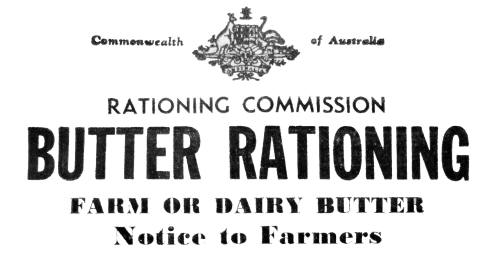
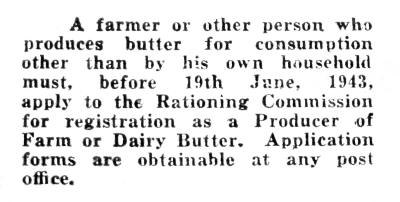

Left: Notice from The North Midland Times
During the Second World War there were shortages in many commodities, and butter was rationed across Australia from mid 1943. The rationing applied to everyone who bought and sold butter - including farmers who sold, gave away or traded small amounts.
This impacted on people more than it would today, as butter wasn't just a spread for sandwiches and toast. Most households prepared the majority of their food from scratch and butter was used extensively in cooking, baking and for frying.
During the Second World War there were shortages in many commodities, and butter was rationed across Australia from mid 1943. The rationing applied to everyone who bought and sold butter - including farmers who sold, gave away or traded small amounts.
This impacted on people more than it would today, as butter wasn't just a spread for sandwiches and toast. Most households prepared the majority of their food from scratch and butter was used extensively in cooking, baking and for frying.
Right: Supermarket Butter from 2013
Many people once made their own butter from scratch using fresh milk. This required a lot of time to look after a cow and the many tasks of milking, straining, separating, churning and patting.
Today, butter is made in large quantities in electric-powered factories and can be purchased easily and cheaply at supermarkets. There are now also alternatives to butter, such as margarine, which didn't exist in the past.
Many people once made their own butter from scratch using fresh milk. This required a lot of time to look after a cow and the many tasks of milking, straining, separating, churning and patting.
Today, butter is made in large quantities in electric-powered factories and can be purchased easily and cheaply at supermarkets. There are now also alternatives to butter, such as margarine, which didn't exist in the past.
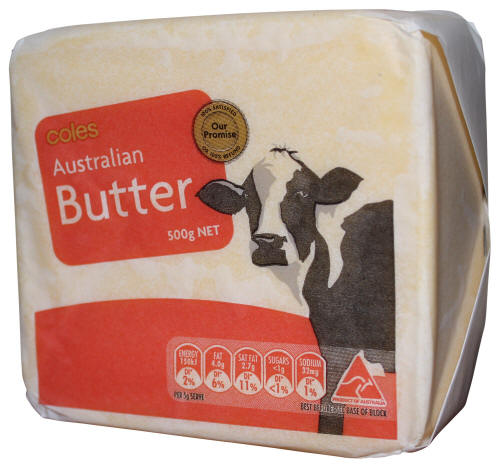
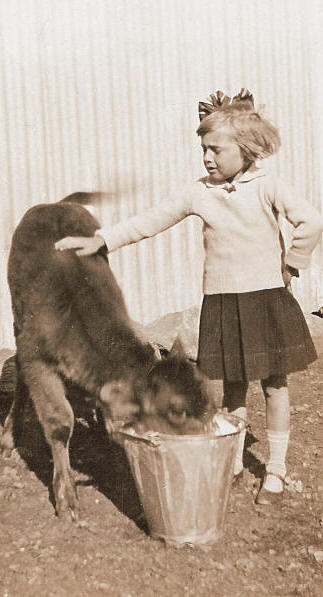
Effie Orlicz (nee Dallimore)
When I was born I couldn't have anything but cow's milk, so we had a cow. Father used to get up and milk the cow, walk it home and put it back at the Elders saleyards, then walk it back at night and milk it again. We had loads of milk, loads of cream. Mother used to give some to the neighbours and poor old Mrs Sharp who had the dairy got very cross.
Alice McVearry
This is a wonderful display of the Museum's collection of old farm equipment. The photos are sharp, the descriptions lively, interesting and informative. Some remarks quite humorous. This is a presentation of history at it's best. I am from the US. I didn't live on a farm, but I do remember milk in glass bottles being delivered house to house in the morning. On very cold mornings if left too long outside, the cream would freeze and pop the top off the bottle creating a frozen column rising above the bottle top. I clearly remember rationing. Once when my parents went away for the weekend they placed us kids temporarily in the local orphanage. Very early in the morning we were all gathered round the kitchen table and given huge steaming bowls of oatmeal with a chunk of genuine butter on the top, a generous sprinkling of real sugar, and thick sweet cream poured over all. I never knew oatmeal could taste so good! Apparently orphanages had privileges in war time, perhaps because of the number of children they served. I have truly enjoyed my visit to the Carnamah Historical Society web page. Well done.
Melissa
I once used butter to spread on my toast.
Valerie McCooke
My Dad (Teddy Pearce) milked cows each day and mum would put one tin bucket full on the edge of the wood stove to warm and later scim off the cream, the rest would go through the separato. Yummy cream. The slower you turned the handle the thicker the cream. We ate heaps of cream with home made melon and fig jam (I still can't eat fig jam again) and if we were lucky plum or apricot jam made with any fruit over at Christmas time. Bread and butter puddings, and lots of sponge cakes with cream. Oh, to have a bottle of. Yummy cream. The slower you turned the handle the thicker the cream. We ate heaps of cream with home made melon and fig jam (I still can't eat fig jam again) and if we were lucky plum or apricot jam made with any fruit over at Christmas time. Bread and butter puddings, and lots of sponge cakes with cream. Oh, to have a bottle of separated cream now.......heaven!!! Cream now.......heaven!!!
Joan Downes
My mother-in-law used to speak about sending churns of milk from Yandanooka to Perth in the early years and wartime.
Max R. Shumack, age 75
I started milking cows at age 10--My father was milking the cow and I ask him to let me try---After a few instructions and practice, I began milking almost as well as he could--From that day until I graduated from high school at age 18 milking was my chore and only my chore---the only time my mother or father would do the milking would be if I was away for some reason---I used a metal bucket with a handle and I would put water in it before milking to wash the udders and the bag before milking---I would take the long hairs on the cow's tail and tie the tail to a nail on the wall before starting to milk--Then I would place the bucket between my knees and start milking with both hands--As the bucket became heavy with milk, I would place it on the ground--This was risky in that the cow would sometimes pick her foot up and step into the bucket which, of course, ruined the milk--Eventually, I learned how to place my leg and foot close to the cow's leg to prevent this from happening---My mother would strain the milk through a clean white cloth into a pitcher and place it in the ice box and later in the refrigerator when we obtained electricity---As I became a teenager, I resented somewhat having to milk the cow because an odor would settle on my hands that was hard to remove----I remember having to milk the cow before the high school prom and on my graduation night from high school---After leaving for Auburn University for a degree in Forestry, I do not remember ever having to milk the cow again---I grew up drinking raw milk and recently found it in a health food store and I have started drinking it again----February 4th, 2013
Cyril Rayner
We always kept one or two milking cows. We shut the cows up at night and milked them in the morning. The calves got the evening milk. We had a separator and so we had milk & cream. My wife made butter. I supplied Mrs Wells with milk in a 1 gallon and a 2 gallon tin. Our children at school used to go to the café at dinner time for a hot meal. No money was involved – it was an exchange.
David
Thank you for the great information, My mom tells me about her growing up on a farm in Colorado. Her father had dairy cows and made cheese along with everything else. I love dairy products and dislike the modern concept of diet this or that. I hope the kids of today appreciate how lucky they are to have such easy quantities of the luxury items of yesteryear. Families had to work hard for a living. There is no substitute to the great taste of real butter and whole milk and cream, diet milk or cheese should be outlawed. Don't worry about gaining weight, it is healthy
Keith Mulligan
When we lived in Winchester, Mr Bowra or one of his boys used to bring milk down to us in a billy as they had cows. After we moved to Carnamah in 1936 we used to get it from Mrs Sharp's. They delivered morning and night.
Anthea Harris
We spend a lot of time and effort collecting information about dairies in the western suburbs of Perth, especially Nedlands. Historian Julia Wallis gave a talk and was interviewed by 6PR radio. Most of the information is about the locations of the dairies and the families involved. Masters milk had a large pasteurisation plant on the corner of Stirling Highway and Bulimba Road where much of the milk from the southwest of WA was treated. Please contact Nedlands Library - (08) 9273 3644 if you can add stories, or would like to know more. This excellent site is now part of our resources, thank you.
Michael
We now go to a farmers market in Adelaide and buy 2 litres of fresh Jersey cream from this we make about $15 worth of butter and we eat it at a great rate. it is like the butter we used to make on our own farm and totally different to any of the butter available in supermarkets, a lot less costly too. The butter milk makes great scones.
Helen Green (nee Rowland)
My brother used to have to milk the cow when he was old enough. He never got home with very much as he’d drink it!
Patrick Garcia
I'm writing an informative speech on butter. I am learning tons.
Lee Hoinville
When I was a teenager I tried to impress a fellow I was going out with, by using the best china and serving him a cup of tea with home made biscuits. To my horror we had run out of milk so I raced out to the cow and milked her. The young man was disgusted that I served him milk that had come straight from the cow. It was warm and not pasteurised and he asked me if I was trying to make him sick. That was the end of that relationship.
Carnamah Historical Society & Museum
If you liked the story about Bonny the cow, then you might also like to read our blog post on the Coorow Parrot!
Please help enrich our collective history by sharing your own comment, story or memories. Click here to go to the comment form or send us an email to mail@carnamah.com.au
When I was born I couldn't have anything but cow's milk, so we had a cow. Father used to get up and milk the cow, walk it home and put it back at the Elders saleyards, then walk it back at night and milk it again. We had loads of milk, loads of cream. Mother used to give some to the neighbours and poor old Mrs Sharp who had the dairy got very cross.
Alice McVearry
This is a wonderful display of the Museum's collection of old farm equipment. The photos are sharp, the descriptions lively, interesting and informative. Some remarks quite humorous. This is a presentation of history at it's best. I am from the US. I didn't live on a farm, but I do remember milk in glass bottles being delivered house to house in the morning. On very cold mornings if left too long outside, the cream would freeze and pop the top off the bottle creating a frozen column rising above the bottle top. I clearly remember rationing. Once when my parents went away for the weekend they placed us kids temporarily in the local orphanage. Very early in the morning we were all gathered round the kitchen table and given huge steaming bowls of oatmeal with a chunk of genuine butter on the top, a generous sprinkling of real sugar, and thick sweet cream poured over all. I never knew oatmeal could taste so good! Apparently orphanages had privileges in war time, perhaps because of the number of children they served. I have truly enjoyed my visit to the Carnamah Historical Society web page. Well done.
Melissa
I once used butter to spread on my toast.
Valerie McCooke
My Dad (Teddy Pearce) milked cows each day and mum would put one tin bucket full on the edge of the wood stove to warm and later scim off the cream, the rest would go through the separato. Yummy cream. The slower you turned the handle the thicker the cream. We ate heaps of cream with home made melon and fig jam (I still can't eat fig jam again) and if we were lucky plum or apricot jam made with any fruit over at Christmas time. Bread and butter puddings, and lots of sponge cakes with cream. Oh, to have a bottle of. Yummy cream. The slower you turned the handle the thicker the cream. We ate heaps of cream with home made melon and fig jam (I still can't eat fig jam again) and if we were lucky plum or apricot jam made with any fruit over at Christmas time. Bread and butter puddings, and lots of sponge cakes with cream. Oh, to have a bottle of separated cream now.......heaven!!! Cream now.......heaven!!!
Joan Downes
My mother-in-law used to speak about sending churns of milk from Yandanooka to Perth in the early years and wartime.
Max R. Shumack, age 75
I started milking cows at age 10--My father was milking the cow and I ask him to let me try---After a few instructions and practice, I began milking almost as well as he could--From that day until I graduated from high school at age 18 milking was my chore and only my chore---the only time my mother or father would do the milking would be if I was away for some reason---I used a metal bucket with a handle and I would put water in it before milking to wash the udders and the bag before milking---I would take the long hairs on the cow's tail and tie the tail to a nail on the wall before starting to milk--Then I would place the bucket between my knees and start milking with both hands--As the bucket became heavy with milk, I would place it on the ground--This was risky in that the cow would sometimes pick her foot up and step into the bucket which, of course, ruined the milk--Eventually, I learned how to place my leg and foot close to the cow's leg to prevent this from happening---My mother would strain the milk through a clean white cloth into a pitcher and place it in the ice box and later in the refrigerator when we obtained electricity---As I became a teenager, I resented somewhat having to milk the cow because an odor would settle on my hands that was hard to remove----I remember having to milk the cow before the high school prom and on my graduation night from high school---After leaving for Auburn University for a degree in Forestry, I do not remember ever having to milk the cow again---I grew up drinking raw milk and recently found it in a health food store and I have started drinking it again----February 4th, 2013
Cyril Rayner
We always kept one or two milking cows. We shut the cows up at night and milked them in the morning. The calves got the evening milk. We had a separator and so we had milk & cream. My wife made butter. I supplied Mrs Wells with milk in a 1 gallon and a 2 gallon tin. Our children at school used to go to the café at dinner time for a hot meal. No money was involved – it was an exchange.
David
Thank you for the great information, My mom tells me about her growing up on a farm in Colorado. Her father had dairy cows and made cheese along with everything else. I love dairy products and dislike the modern concept of diet this or that. I hope the kids of today appreciate how lucky they are to have such easy quantities of the luxury items of yesteryear. Families had to work hard for a living. There is no substitute to the great taste of real butter and whole milk and cream, diet milk or cheese should be outlawed. Don't worry about gaining weight, it is healthy
Keith Mulligan
When we lived in Winchester, Mr Bowra or one of his boys used to bring milk down to us in a billy as they had cows. After we moved to Carnamah in 1936 we used to get it from Mrs Sharp's. They delivered morning and night.
Anthea Harris
We spend a lot of time and effort collecting information about dairies in the western suburbs of Perth, especially Nedlands. Historian Julia Wallis gave a talk and was interviewed by 6PR radio. Most of the information is about the locations of the dairies and the families involved. Masters milk had a large pasteurisation plant on the corner of Stirling Highway and Bulimba Road where much of the milk from the southwest of WA was treated. Please contact Nedlands Library - (08) 9273 3644 if you can add stories, or would like to know more. This excellent site is now part of our resources, thank you.
Michael
We now go to a farmers market in Adelaide and buy 2 litres of fresh Jersey cream from this we make about $15 worth of butter and we eat it at a great rate. it is like the butter we used to make on our own farm and totally different to any of the butter available in supermarkets, a lot less costly too. The butter milk makes great scones.
Helen Green (nee Rowland)
My brother used to have to milk the cow when he was old enough. He never got home with very much as he’d drink it!
Patrick Garcia
I'm writing an informative speech on butter. I am learning tons.
Lee Hoinville
When I was a teenager I tried to impress a fellow I was going out with, by using the best china and serving him a cup of tea with home made biscuits. To my horror we had run out of milk so I raced out to the cow and milked her. The young man was disgusted that I served him milk that had come straight from the cow. It was warm and not pasteurised and he asked me if I was trying to make him sick. That was the end of that relationship.
Carnamah Historical Society & Museum
If you liked the story about Bonny the cow, then you might also like to read our blog post on the Coorow Parrot!
Please help enrich our collective history by sharing your own comment, story or memories. Click here to go to the comment form or send us an email to mail@carnamah.com.au
V i r t u a l M u s e u m :
Macpherson ● Railway ● Farms ● War ● Town ● Schools ● Roads ● Business ● Electricity ● Tearooms ● Post ● Books ● Toys
Now featuring 10863 Bushranger presented by Act-Belong-Commit





